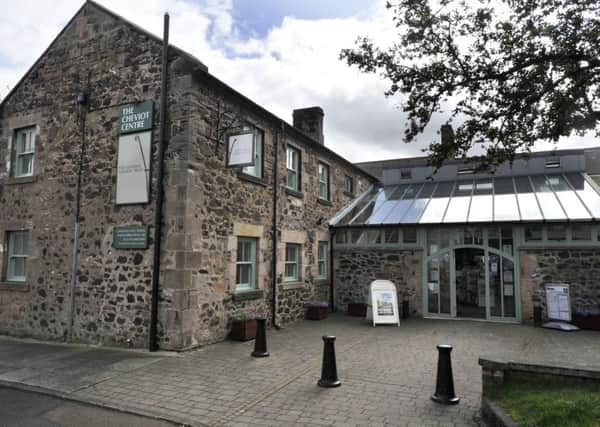Glendale, History Society


He started by discussing the impressive station at Alnwick, designed by William Bell, who was the architect for many other stations on the line.
The Duke of Northumberland had to give permission before building could commence, and clearly only a grand building would suffice for his home town. Part of this station still survives as Barter Books, which has a model railway running above the stacks.
Advertisement
Hide AdAdvertisement
Hide AdThe railway opened in 1887 and was 35 miles long. It was mainly a freight line, transporting livestock, but a limited passenger service also operated until 1930.
Given the sparsity of the local population and the fact that stations were often some distance from the villages they served, owing to engineering constraints and the whims of landowners, it is hardly surprising that the service was unsustainable.
During the winter of 1948–49 a bridge was washed away south of Mindrum, and in 1949 a bridge near Ilderton also succumbed to floodwaters. The Mindrum bridge was rebuilt, but the line was insufficiently profitable to justify reconstructing that at Ilderton, particularly under post-war austerity.
However, the line continued to operate in two sections. Freight trains continued to run from Alnwick to Ilderton until the early 1950s, while the section between Wooler and Coldstream (actually Cornhill) survived until 1963, when it succumbed to the Beeching cuts. The line was also used for a time for holiday carriages.
Advertisement
Hide AdAdvertisement
Hide AdMost was single track, though larger stations, such as Wooler, had double track serving two platforms, and there was an island platform at Whittingham.
This line was undoubtedly one of the most picturesque in England.
It was connected to the main East Coast line by a branch adjoining Alnwick to Alnmouth. Some progress has been made in reopening part of this as a heritage railway.
The line from Alnwick started in a South-Westerly direction, after about a mile passing through woodland, then four miles further across the magnificent viaduct near Edlingham, with fine views of the castle and interesting church.
Advertisement
Hide AdAdvertisement
Hide AdIt continued Northwards, passing the crenelated eyecatcher (folly) of Levington, with views up to the Simonside Hills near Rothbury. After a short tunnel the train would have pulled into Whittingham Station, which is visible if you look North from the bridge near the Bridge of Aln pub.
The line continued to Glanton Station, then followed a section (now walkable) mainly parallel with the A697 as it approaches Powburn. The fine iron bridge that carried the line over the river was removed after closure and relocated on the surviving rail network.
The next station was Hedgeley, originally to be named Powburn, a far larger community. Further North was Wooperton, the area South of this station now occupied by Scott’s Sawmill.
The line then passed the landmark Percy’s Cross to reach the surviving, rather grandiose, but isolated station at Ilderton. Later, this station became for a time a restaurant and a disused carriage was parked nearby.
Advertisement
Hide AdAdvertisement
Hide AdPassing over the site of the collapsed bridge that sounded the death knell for the line, the train would shortly have pulled into Wooler, the major stop, with two platforms and a Goods Depot, now the home of Millers Antiques.
Beyond Wooler the line meandered its way through Glendale. The next station, again out of all proportion to the community it served, is Akeld. The station, some outbuildings and a signal box still survive and can be seen from the A697.
The first railway proposed for this area was intended to continue Northwards from Akeld to Ewart Newtown, where a Railway Hotel was constructed. This building now stands empty beside a farm, an incongruous monument to a railway that never existed.
Instead the line turned Westward at Akeld, passing through a cutting under the A697, then along the Glen Valley to Yeavering, where the crossing keeper’s cottage still exists, then on past the site of Ad Gefrin, the Anglo-Saxon palace of King Edwin, discovered by aerial photography in the 1960s.
Advertisement
Hide AdAdvertisement
Hide AdFrom Kirknewton Station, it continued across the river at Westnewton, then on to Kilham Station and the sidings used for loading sheep. Here the line veers Northwards towards Mindrum. An old road sign nearby still points to Mindrum Station, although now it is a private house, like all the surviving stations on the line.
Shortly after Mindrum, the line joined up with the Kelso–Tweedmouth line, crossing Learmouth viaduct before arriving at Coldstream (Cornhill) Station, where one could change trains for Tweedmouth for the main East Coast line, or head Westwards to Kelso and beyond.
The next meeting of Glendale Local History Society is at 7.30pm, on Wednesday, April 11, at the Cheviot Centre, Wooler, when Graeme Watson will speak about The Last Of The Wandering Minstrels: The Life And Work Of Robert Gray, The Yetholm Poet.